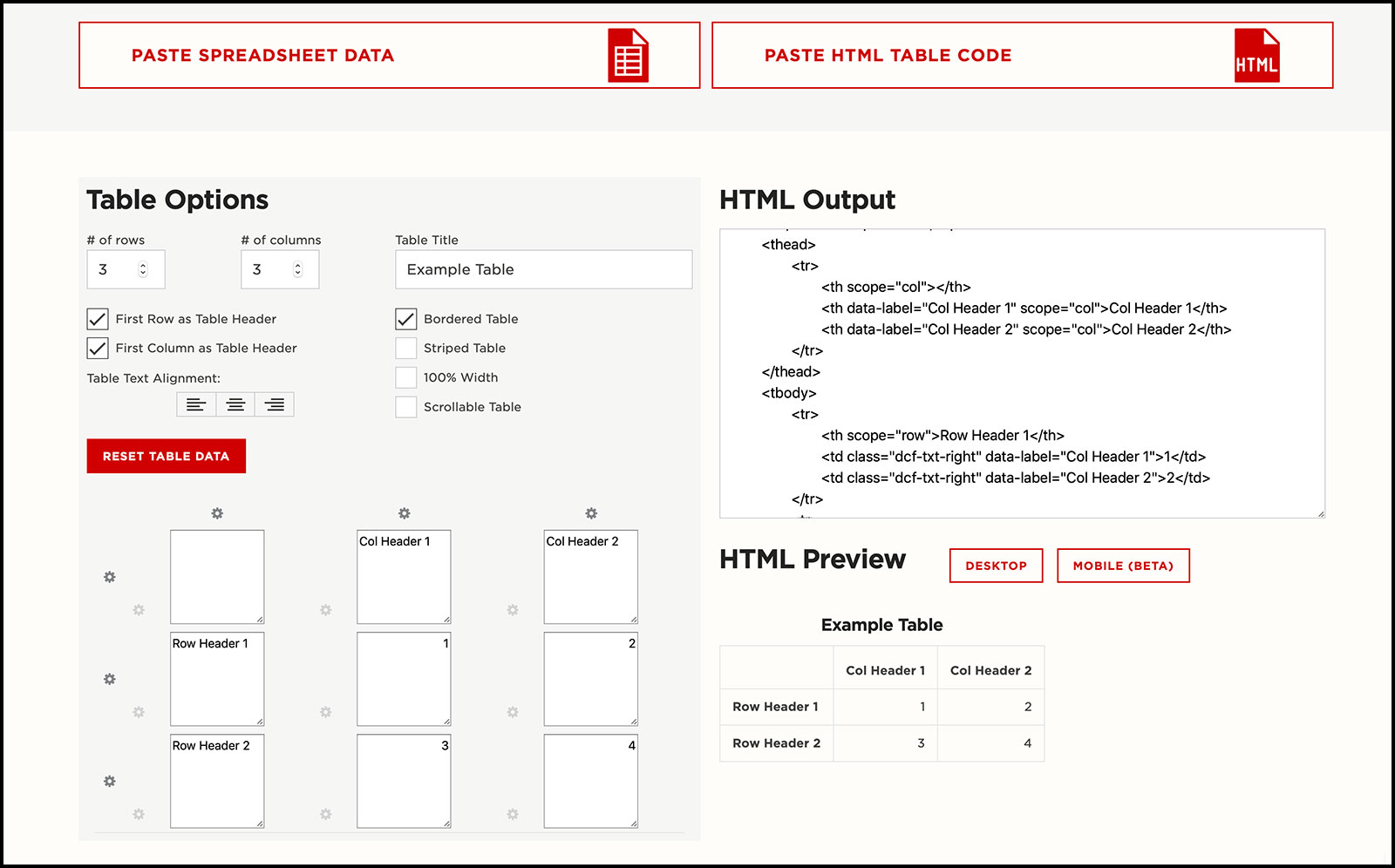
In fall 2020, IANR Media released an enhanced version of its widely popular responsive table generator tool. The online tool generates HTML code for displaying table data on a web page in a format that's mobile responsive and follows Web Content Accessibility Guidelines, saving web developers hours of additional HTML coding.
When users enter their data, the tool generates table code that can be copied and pasted into a web page's HTML. As a result, a spreadsheet with large amounts of research data can be transformed into an accessible web table within seconds.
"With large datasets it can be difficult to be timely yet meet all the web guidelines and standards. We wanted to make a tool to help us achieve both," said Nic Colgrove, software development specialist, IANR Media.
In education and government, there are laws pertaining to web accessibility. In addition, the CDC website states 1 in 4 adults in the United States have some type of disability, making it even more essential to ensure web content is accessible. IANR Media's responsive table generator was one of the first online tools available for creating web accessible tables. The tool's web page currently ranks number one nationally in Google search results for "responsive table generator", according to MOZ Pro Rankings.
How a table is formatted can affect usability. For instance, a column of numerical data may be easier to read right-aligned whereas textual data may be easier to read left-aligned. In the new version of the tool, text alignment can be applied to the contents of a table, cell, row or column by clicking a button. Likewise, table width and scrolling options display narrow and extra-wide tables in a more readable format. The tool also provides an option for turning off default table borders and row striping — for a more simplified look.
The tool introduces options for previewing tables on desktop computers and mobile devices. "We want our content to be available on all platforms, desktop and mobile, but this also helps us make our content inclusive and accessible," Colgrove said.
Although several new features were added, the effortless process for entering and updating data remained the same. Users can enter data by typing it into the tool, pasting it from a spreadsheet document or pasting in outdated table HTML. The tool's real-time editing feature still allows users to modify table contents in a web browser and watch the updates happen immediately on the screen.
The tool was initially designed to work only in UNLcms and UNL.edu 5.0 framework sites; however, after receiving multiple requests from site visitors outside of the University of Nebraska–Lincoln Web Developer Network, the WDN Governance Board approved providing an optional downloadable file that houses the table CSS styles developed by UComm/ITS Digital Experience Group and the UNL Web Developer Network team.
The tool averages almost 3,000 pageviews a month according to Google Analytics, attracting traffic from Español Worpress.org, .edu sites and tech blogs, where it appears in unsolicited lists of top five website table generators.
The tool can be found on IANR Media's website in the Website Resources section.
More details at: http://ianrmedia.unl.edu